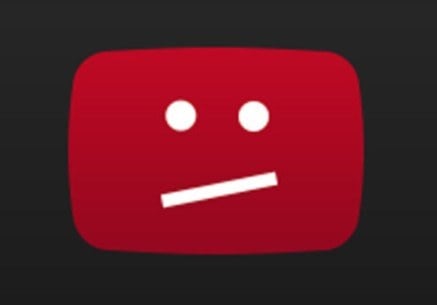 To protect copyright holders, YouTube uses an advanced piracy recognition system that flags and disables videos that are uploaded without permission.
To protect copyright holders, YouTube uses an advanced piracy recognition system that flags and disables videos that are uploaded without permission.
This copyright filter, known as Content-ID, works reasonably well but its use is limited to a select group of major copyright holders.
The Spanish-born movie tycoon Carlos Vasallo should fall into this category. Through several companies, the actor and producer owns the rights to the world’s largest collection of Mexican and Latin American movies. Unfortunately, many of these are illegally shared on YouTube.
In 2015, Vasallo reached out to YouTube, hoping to fix this piracy problem. The video platform was open to explore several options and Mr. Juanjo Duran, Google’s Director of Latin Media and Entertainment, suggested the “Content-ID” system as an ideal solution.
This sounds like a typical approach YouTube would have when dealing with major copyright holders. However, unlike others, Vasallo refused to use Content-ID system because it came with a major caveat. Mr. Vasallo had to release YouTube from all possible piracy claims that took place in the past.
Movie Tycoon Sues YouTube in Florida
Instead, the movie tycoon opted to send old-fashioned DMCA takedown notices. However, according to a lawsuit filed in a Florida federal court this week, that did little to stop people from pirating his films.
Vasallo hired a New York law firm to police YouTube and send takedown notices when pirated copies appeared. While the takedown process worked, new copies were added constantly. Even banned users reportedly returned using new names.
“Once a pirated movie was found, Mr. Vasallo and Plaintiff would send YouTube a takedown notice. YouTube would then remove the pirated video movie in its entirety. However, YouTube would not remove all matching videos, as YouTube would specifically only remove the one video from the one infringer related to the single infringing upload identified in the takedown notice.
“The same infringer would be free to upload the video again until three takedown notices were filed against him within a ninety-day period. Then and only then, would YouTube cancel the infringer’s username. The same infringer could then create a new username and begin the process of posting the pirated videos all over again,” the complaint notes.
Over the past several years, the law firm sent over 10,000 takedown notices for pirated films that were viewed more than 500 million times on YouTube. The video service maintains that this is how the DMCA works, but the movie tycoon argued that the company should do more.
Content-ID Comes With a Caveat
The complaint mentions the earlier discussions with YouTube about joining the Content-ID platform. At the time, YouTube said that it could “very easily” detect and block infringing content. However, in order to join, the movie tycoon had to sign a release.
Under U.S. law, YouTube is not obliged to actively monitor for pirated content. The company told the movie tycoon that it’s protected by the DMCA. But what is the purpose of the release then, Vasallo wonders.
“[I]f Defendants confidently rely on the protections afforded to them by the DMCA, then why did Defendants adamantly insist that Mr. Vasallo, as well as Plaintiff, release Defendants from all claims associated with Defendants’ prior acts of piracy?
“The clear answer to this question is the following: Defendants consistently use the DMCA as both a shield and sword against the average copyright owner, such as Plaintiff in this case,” the complaint adds.
‘YouTube Should Proactively Monitor Piracy’
The lawsuit argues that YouTube should be required to take reasonable steps to anticipate and filter potential copyright infringements. This effectively means opening up the Content-ID system to all rightsholders without caveats.
According to the movie mogul, YouTube has intentionally decided not to use the Content-ID process for all rightsholders. By doing so, it can monetize the billions of views these videos generate.
“Accordingly, Defendants knowingly and willingly induced, facilitated, engaged, and promoted the infringement of Plaintiff’s copyrighted materials for their own financial benefit,” the complaint reads.
Through the lawsuit, Vasallo requests damages for YouTube’s alleged copyright infringing activity. With over 700 copyrighted titles, the potential statutory damages add up to more than $100 million.
In addition to ruling that YouTube willfully infringed copyrights, the movie tycoon also requests a permanent injunction to require the video platform to implement reasonable technologies to prevent or limit copyright infringement going forward. That sounds a lot like the EU’s ‘upload filter’ requirement.
—
A copy of the complaint Mr. Vasallo’s company Athos Overseas filed against YouTube at the US District Court for the Southern District of Florida is available here (pdf)





